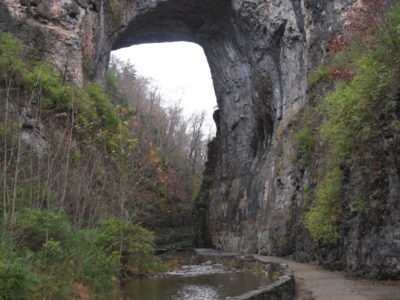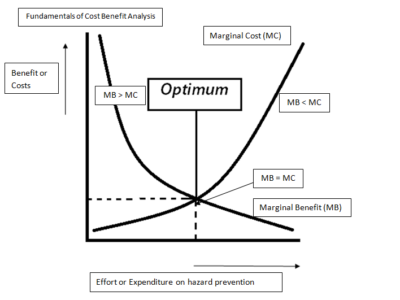We Built This City On Urban Form
California's CEQA reforms will require rethinking how we code our cities
I am one of the relatively few observers who is not convinced that the California Legislature’s recent CEQA reforms are some sort of major transformation. They are a positive step toward building more housing in this state, but the idea that they will unleash housing construction and affordability is a classic case of overpromising – which should be unsurprising, since they are basically a vehicle for Gavin Newsom’s Presidential campaign (making the assumption that...
CONTINUE READINGTrump’s Funniest Executive Orders
Yes, they’re destructive and often cruel. But sometimes, they're also unintentionally funny.
Trump’s executive orders are no laughing matter. He’ll sometimes bring the tremendous power of the entire executive branch to bear on some petty issue. And usually, at least from my perspective, harming the public interest and sometimes democracy itself. And yet…it’s sometimes a little hard to keep from laughing. Sometimes it’s the mismatch between the dignity and sheer power of the office of the presidency and the topic on which that power is deployed, like...
CONTINUE READINGWhy is EPA at War with Its Own Employees?
The Drain is a weekly roundup of environmental and climate news from Legal Planet.
While many of us prepared to celebrate Independence Day last week, a group of employees from the Environmental Protection Agency were bravely speaking out about what they see as their boss “recklessly undermining the EPA mission” of protecting human health and the environment. In a now-infamous letter sent to EPA Administrator Lee Zeldin, hundreds of current and former employees outlined five main concerns about the agency's direction (undermining public trust...
CONTINUE READINGA Landmark Geoengineering Conversation in the Global South
The UCLA Emmett Institute helps sponsor and organize the Degrees Global Forum, the largest event of its kind to date.
I post periodically about developments in the debate over solar geoengineering (SRM) and its potential role in response to climate change. News accounts may suggest that this debate moves fast, but it has three enduring, large-scale themes. First, SRM presents high stakes for climate risks and response – which most governments thus far have been reluctant to acknowledge. Second, it is crucial to build effective and legitimate capacity for global governance of these...
CONTINUE READINGFilling the gaps from CEQA reform
California has long leaned heavily on CEQA to cover gaps in other environmental laws. That will have to change when we reform CEQA.
California has enacted a major reform for CEQA, creating a substantial exemption for infill urban housing. I’ve written why this is, on balance, beneficial for housing and the environment. But I also want to highlight a pitfall as the state continues looking at future reforms for CEQA. California has long relied on CEQA as a gap-filler for its other environmental laws. As the state pares back CEQA, it should look at where it needs to update other state environm...
CONTINUE READINGShortchanging the Environment While Making NEPA More Chaotic
Trump replaced a coherent set of rules governing the executive branch with a welter of agency-specific regulations.
In one of Trump’s first executive orders, he eliminated a centralized system that Jimmy Carter initially set up to issue regulations governing environmental impact statements. Instead, he called on each agency to issue its own regulations, which seems to have caused the predictable amount of confusion. I've examined the new regulations from three agencies: the Department of Defense (DOD), the Department of Energy (DOE) , and the Department of Transportation (DO...
CONTINUE READINGJefferson, Adams, and the Environment
The Founding Fathers were more environmentally aware than we give them credit for. Woke, even.
The Fourth of July calls to mind that date in 1776, but another Fourth, exactly fifty years later, deserves to be remembered. On that day in 1826, Thomas Jefferson and John Adams- –two architects of American Independence who later served as President -–both died, marking the end of an era. We tend to think that earlier Americans saw nature as merely something to be conquered and exploited, but that wasn't true of either one of these two Founding Fathers Thomas...
CONTINUE READINGDoes the Law Require Cost-Benefit Analysis?
According to the D.C. Circuit, the answer is no.
Supporters of cost-benefit analysis have argued that agencies have a duty to follow cost-benefit analysis in their decisions. Agencies routinely perform cost-benefit analysis of proposed regulations, because presidential orders have long required them to do so. And the White House may also pressure them to make their decisions accordingly. But in the D.C. Circuit, anyway, the rule seems to be clear that there is no legal mandate to conform their decisions to economic...
CONTINUE READINGA Pale Echo of the Sagebrush Rebellion
The latest failed effort at privatization of federal lands shows the modern political weakness of land transfer movements
Republican Utah Senator Lee’s effort to sell significant amounts of federal land through the reconciliation bill is dead – he withdrew his proposal last week. I want to contrast the modern efforts at privatization with another era of calls for transfer of federal lands, the Sagebrush Rebellion of the 1970s. Like Senator Lee’s effort, as well as a similar failed proposal in the House reconciliation bill, the Sagebrush Rebellion pushed for major changes in federa...
CONTINUE READINGA Very Bad House Vehicle Pollution Bill
The Fuel Emissions Freedom Act may be a stunt, but it’s worth examining
It can be hard to keep track amid all the hair-raising developments in Congress and at the Supreme Court, but last week, a group of House Republicans led by Roger Williams of Texas introduced the Fuel Emissions Freedom Act, hot on the heels of the purported (illegal) termination of California’s vehicle emissions standard waiver. This freedom-to-pollute bill would: Repeal federal authority to regulate automobile emissions (held by the Environmental Protection Agen...
CONTINUE READING










